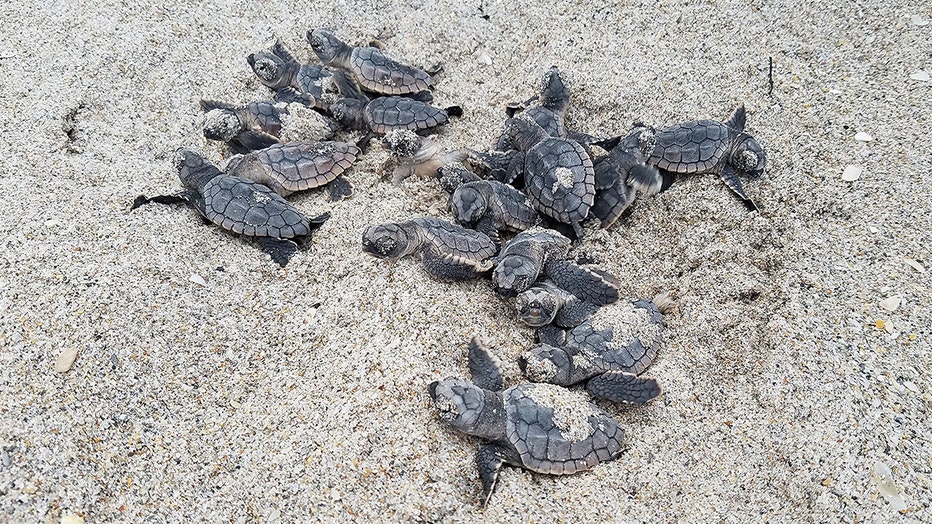FWC: Baby sea turtles are hatching, so keep your distance on Florida beaches

Sea turtle-friendly lights installed at Treasure Island
This weekend marks the start of sea turtle nesting season along the beaches in the Sunshine State.
CLEARWATER, Fla. - Every sea turtle season, state wildlife officials remind beachgoers the importance of keeping hatchlings safe as they make their way to the ocean or the Gulf on their own.
Over the weekend, the Florida Fish and Wildlife Conservation Commission issued that same reminder, saying sea turtles are hatching along the Sunshine State beaches. Sea turtle season falls between March 1 and October 31.
"It is important to keep your distance from sea turtles and their nests on the beach," according to an FWC statement. "Sea turtles are protected, so you should allow hatchlings to crawl toward the ocean on their own. Any interference or disturbance, including getting too close, can cause hatchlings to become confused and lose their way."
Officials also said bright lights from buildings, cell phones or cameras can cause baby turtles to become disoriented, and they can stray away from their destination.

In rare chance, sea turtle spotted nesting on Florida beach
It doesn't happen often, experts say, but beachgoers, researchers, and photographers alike shared a special experience when an endangered, 800-pound leatherback sea turtle was seen nesting on Melbourne Beach.
"If they are unable to reach the ocean quickly, they can become dehydrated and exhausted, making them an easy meal for predators," according to FWC.
In Florida, all five of its sea turtle species are either endangered or threatened, meaning it's illegal to harm, harass or kill any sea turtles, their eggs, or their hatchlings.

Loggerhead hatchlings (Provided by FWC)
The Endangered Species Act lists the green, leatherback, hawksbill, and Kemp’s ridley turtle as endangered. The loggerhead turtle is listed as a threatened species.
"Interfering with a sea turtle hatchling’s trek to the ocean can have fatal consequences," FWC sea turtle biologist Dr. Robbin Trindell said in a statement. "It’s very important to leave them undisturbed. By keeping beaches dark, beachfront buildings dark and giving sea turtles space, we can make sure that our children and grandchildren can also enjoy watching them make this amazing journey."
RELATED: Treasure Island installs sea turtle-friendly lights in time for hatchling season
FWC offered the following tips to keep Florida's sea turtles safe:
- Keep beaches dark. After sundown, turn off any lights not necessary for human safety. Use long wavelength amber LED lamps for lights that must stay lit and shield lights, so they are not visible from the beach. Remember to close shades or curtains at night.
- No flash photos. On the beach at night, don’t take flash photos or use bright cellphones or flashlights. This can cause turtles to become disoriented and crawl away from the ocean, putting them at risk.
- Remember, sea turtles are protected by law. Keep your distance and give sea turtles space if you see one on the beach. Never touch a nesting turtle because it might leave the beach without nesting if disturbed.
- Clear the way at the end of the day. Beach furniture, boats, toys and trash left behind on the sand can become obstacles that block crawling sea turtles. Fill in any holes dug in the sand. Holes can trap turtles and they also pose a safety risk to humans.
Learn more about sea turtles in Florida by visiting FWC’s website.

